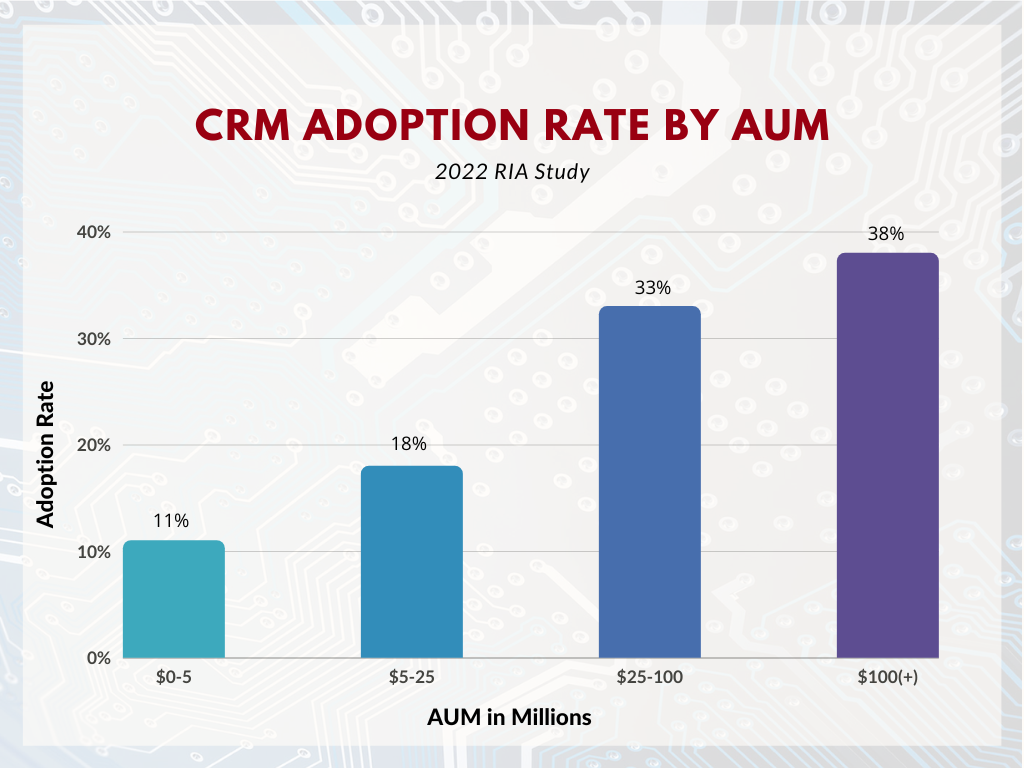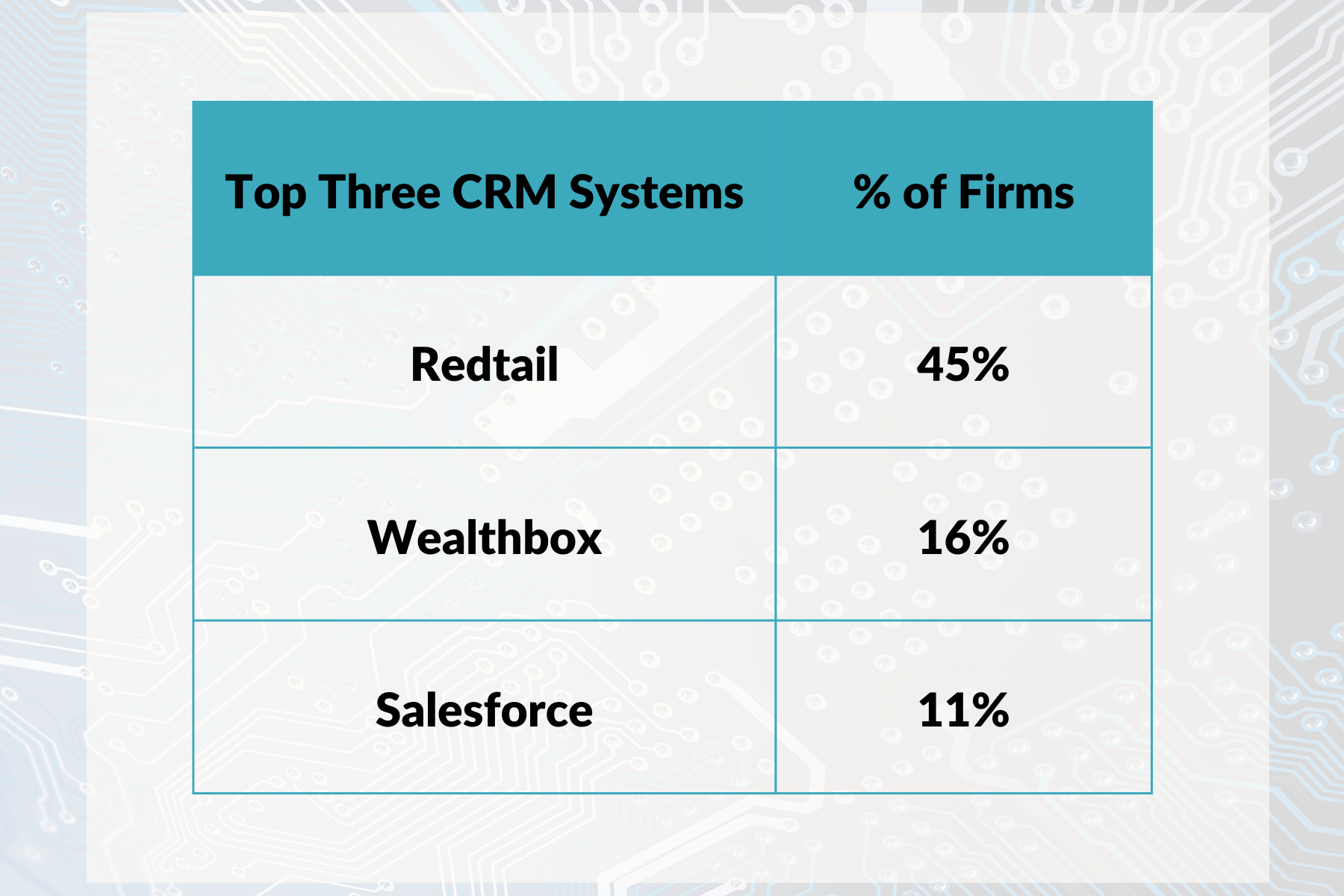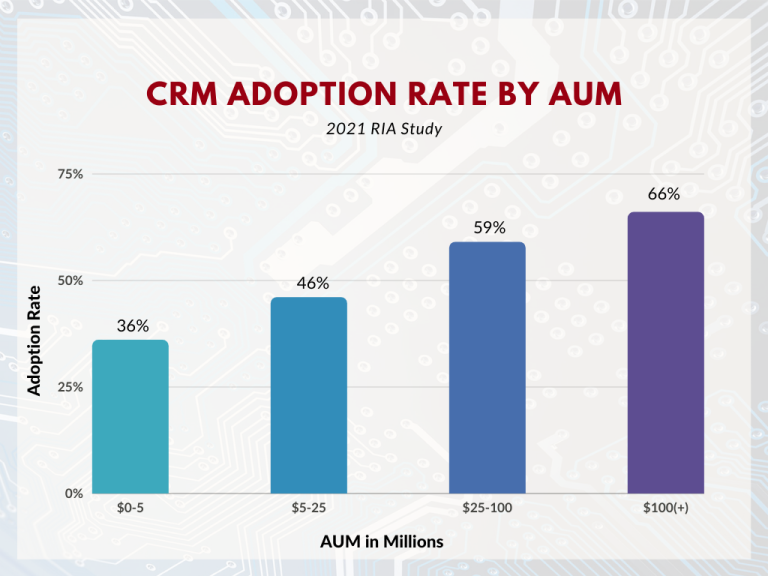A customer relationship management (CRM) solution can become an investment adviser’s primary technology system, reliably collecting and presenting client information to make the best possible use of the adviser’s time. Advisers who successfully implement a CRM solution often report long-term cost savings, more scalable growth, and a substantial improvement in the quality of service provided to clients. Additionally, firms may rely on well-maintained CRM systems if they choose to optimize their tech stack by integrating digital proposal generation and/or digital account open tools. In this blog post, we will explore the results of our annual survey regarding CRM systems used by registered investment adviser (RIA) firms.
Strong RIA Adoption Rate of CRM Systems
CRM systems were the most popular technology solution according to the 2022 RIA in a Box Technology Survey, with 52% of RIA firms using a CRM solution. The results show how CRM adoption rates have remained relatively flat, given the steady flow of new, smaller investment advisory firms entering the industry each year.
CRM Adoption Rates by Survey Year


Top CRM Systems Adopted by RIA Firms
As seen in recent years, Redtail is by far the dominant leader in the RIA CRM technology category. Our results show Wealthbox as one of the leading options for smaller RIA firms in terms of AUM. Salesforce continues to gain steady momentum among larger firms. It is notable that this survey demonstrates a continuation of Redtail (45%), Wealthbox (16%), and Salesforce (11%) capturing slightly more than two-thirds of the overall CRM software category market share year over year.
Top Three CRM Systems For RIA Firms

As the CRM software category evolves, there is a growing divide between small and mid-sized investment advisory firms looking for an RIA-centric solution such as Redtail or WealthBox, compared to larger firms seeking traditional, less industry-specific CRM solutions, such as Salesforce or Microsoft Dynamics. Small to mid-size RIA firms continue to gravitate towards Redtail at increasing rates. However, WealthBox is an emerging player that has continued to show year over year growth in adoption at the smaller end of the RIA market.
It should be noted that most leading RIA CRM software providers, including Salesforce, Wealthbox, Microsoft Dynamics, Junxure, and others, price their solutions per user. The most notable exception to this pricing model is Redtail, which prices on a per database model. Each standard Redtail database subscription package includes up to 15 users for the same all-in cost.
For larger RIA firms, Salesforce continues to distance itself from other traditional industry-agnostic CRM vendors, such as Microsoft Dynamics. Our survey showed Salesforce gained significant adoption with RIA firms with $100 million or more in assets under management. Although Salesforce has a relatively small market share in the industry compared to Redtail, Salesforce remains a popular CRM choice for larger firms. Salesforce offers a powerful CRM tool, but it is important to note the investment and unique customization needed for an investment advisory firm to properly implement Salesforce. Many firms seek third-party implementation assistance, which can easily cost tens of thousands of dollars to customize Salesforce to meet the unique requirements of an advisory firm.
CRM as an RIA Firm’s Technology Hub
CRM systems that are ideally situated can integrate with various adviser tools used for performance reporting, financial planning, investment and document management. However, a successful CRM solution implementation requires a strong adoption from firm employees to maintain accurate client records.
Presently, our MyRIACompliance® investment adviser software platform integrates with the industry’s three leading CRM vendors: Redtail, Salesforce, and Wealthbox.
This blog post is the fourth of several to explore technology adoption and usage from the findings from our annual survey of more than 2,000 RIA firms. This proprietary RIA in a Box study was conducted in the first quarter of 2022 and is paired with results from past surveys, as well as publicly accessible data provided by the Securities and Exchange Commission (SEC). The goal of our annual study is to understand different options which comprise each firm’s characteristics, and to determine whether specific characteristics impact the growth, size or operational efficiency of an RIA firm.
